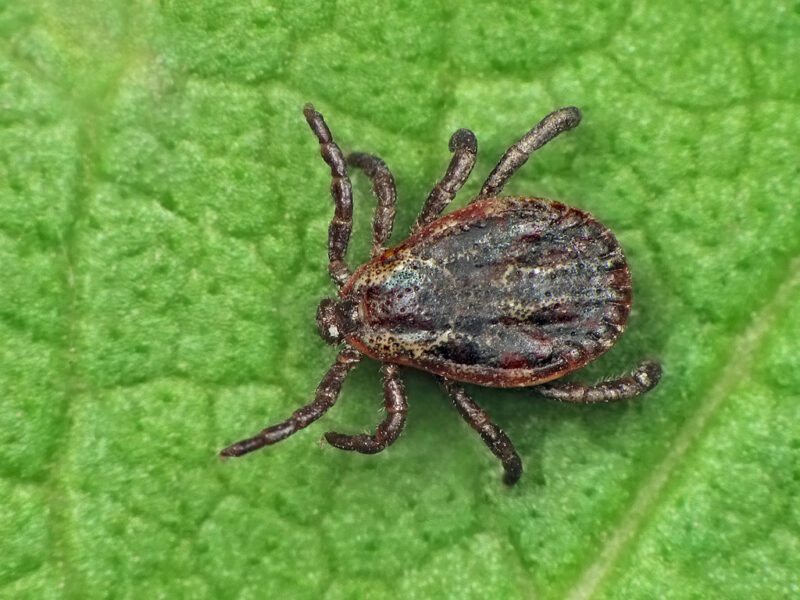Image: uu yersinia pestis; CC BY 2.0 Deed
In the 14th century, the plague, also known as the “Black Death,” killed over 25 million people in Europe.1 Although the plague may seem like a disease of the past, the WHO reports between 1,000 and 3,000 cases internationally each year.2, 3 On July 9, 2024, a human case of the plague was confirmed in Pueblo County, Colorado.4 The type of plague was not specified, and health officials are continuing to investigate the source of the infection.4 In light of this most recent case, it is important to view it in the context of a long history of the plague globally.
The plague is spread by the bacteria Yersinia pestis,5 which can be carried by fleas. There are two main types of the plague: bubonic and pneumonic.5 Humans can contract the bubonic plague through flea bites and contact with infected bodily fluids or materials.5 The pneumonic plague occurs when Y. pestis infects the lungs.6 It is more virulent and spreads through breathing in airborne droplets from a person or animal who is infected.5 The pneumonic plague can also occur when the bubonic plague is untreated and spreads to the lungs.6
While there are only a few cases of the plague each year, it is important to be aware of symptoms and know how to protect yourself. Symptoms include the sudden onset of fever, chills, head and body aches, weakness, vomiting, and nausea.5 Individuals with the bubonic plague develop swollen lymph nodes.6 Early detection is critical as the disease has a case-fatality ratio of 30-60% for the bubonic plague and nearly 100% for the pneumonic plague when it is left untreated.5 Individuals infected with the pneumonic plague should isolate.5 Considering the pneumonic plague is extremely infectious, close contacts should also be treated with antibiotics and should wear a mask.2 No plague vaccine is currently available in the US.7 To learn more about the plague, you can visit the WHO’s website.
The bubonic plague was responsible for the Black Death outbreak.8 However, at that time the mode of transmission was unknown.8 Rats with infected fleas traveled via ships, spreading the plague from port city to port city.8 The disease spread rapidly, infecting people, cows, sheep, goats, pigs, and chickens.8 Because the source was unknown, people were unable to prevent or treat the disease.8 Hundreds of years later the plague came to the United States through steamships with rats arriving from areas with the disease.3 The last urban plague epidemic in the United States was in 1924-1925 in Los Angeles, California.3 Over thirty people died from the pneumonic plague, and the suspected cause was infected squirrels and rats.9, 10 To stop the spread, public health officials implemented multiple measures including quarantines, hospitalization of all contacts, creation of a bacteriological laboratory, and the eradication of rats.10 This event led to urban rats spreading the disease to rural rodent species in the western United States.3 Today, human cases in the U.S. tend to occur sporadically in these western rural areas. The plague tends to impact squirrels, chipmunks, woodrats, and prairie dogs.11
Cases have been rare with the help of precautionary measures and treatment. Thanks to medical advancements, those infected with the plague can now be effectively treated with antibiotics.5 However, individuals should practice precautions to minimize contact with animals that could have infected fleas. These measures include reducing places where rodents can live such as getting rid of cluttered piles of rocks and firewood, brush, and trash.7 Animal food should be kept away from where rodents could access it.7 People in direct contact with animals should wear gloves.7 Individuals should also use bug spray when engaging in outdoor activities.7 Pet owners can protect their animals by using flea control products, especially when their pets are outdoors often.7 It is also recommended to not allow pets to sleep on beds in places where the plague is endemic.7 Even though the plague is rare, understanding its transmission, symptoms, and precautionary measures can help with taking swift action and preventing the disease.
- https://www.ncbi.nlm.nih.gov/pmc/articles/PMC7513766/#:~:text=The%20Black%20Death%20or%20bubonic,people%20in%20fourteenth%2Dcentury%20Europe.&text=Yersinia%20pestis%20
- https://emergency.cdc.gov/agent/plague/faq.asp#:~:text=The%20World%20Health%20Organization%20reports,bubonic%20form%20of%20the%20disease.
- https://www.cdc.gov/plague/maps-statistics/index.html
- https://county.pueblo.org/public-health-department/public-health-officials-confirm-first-human-plague-case-pueblo-county
- https://www.who.int/en/news-room/fact-sheets/detail/plague
- https://emergency.cdc.gov/agent/plague/factsheet.asp
- https://www.cdc.gov/plague/prevention/index.html#:~:text=Remove%20brush%2C%20rock%20piles%2C%20junk,skin%20and%20the%20plague%20bacteria.
- https://www.history.com/topics/middle-ages/black-death
- https://www.latimes.com/archives/la-xpm-2006-mar-05-me-then5-story.html
- https://www.ncbi.nlm.nih.gov/pmc/articles/PMC2595158/?page=1
- https://www.nps.gov/articles/000/plague.htm


